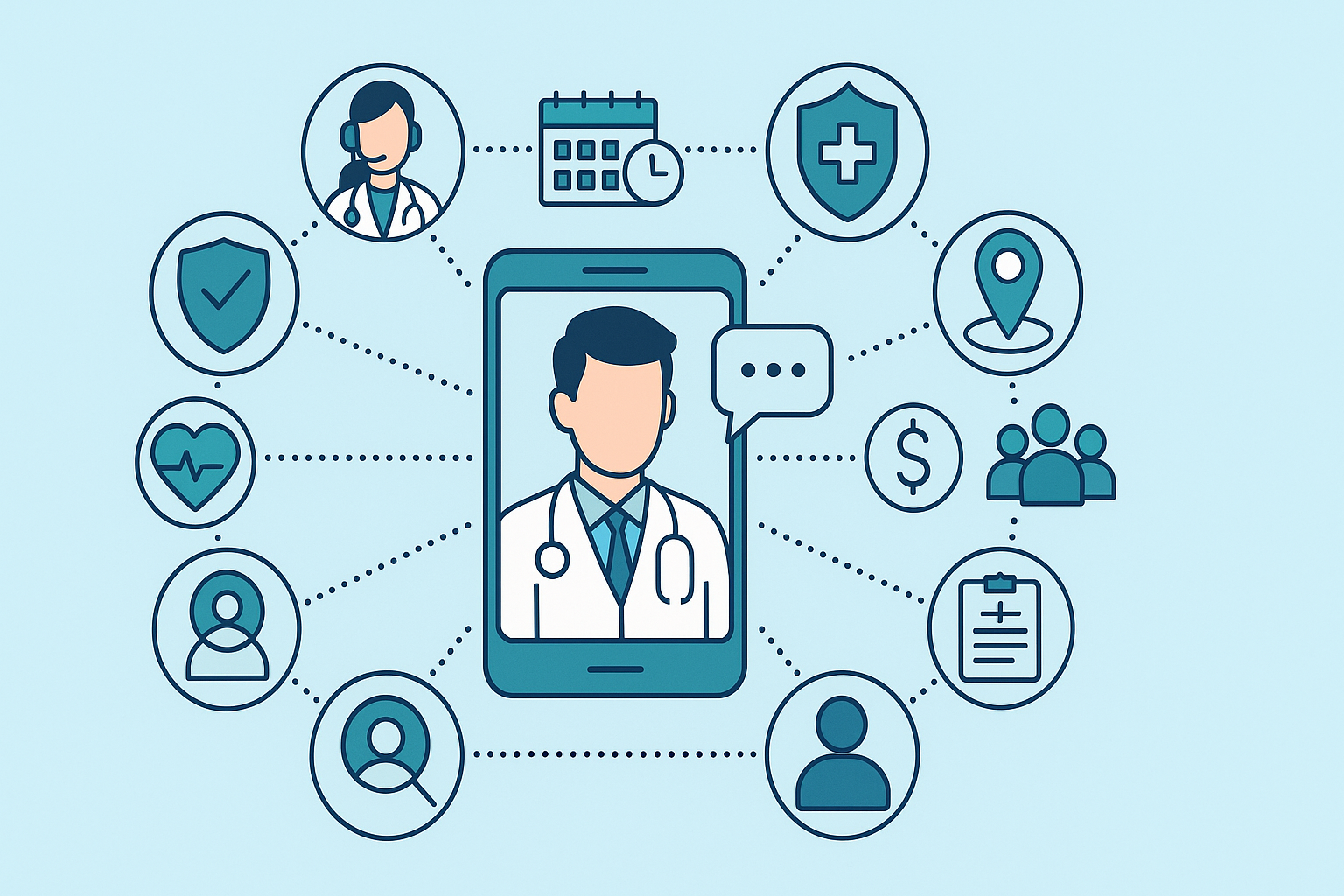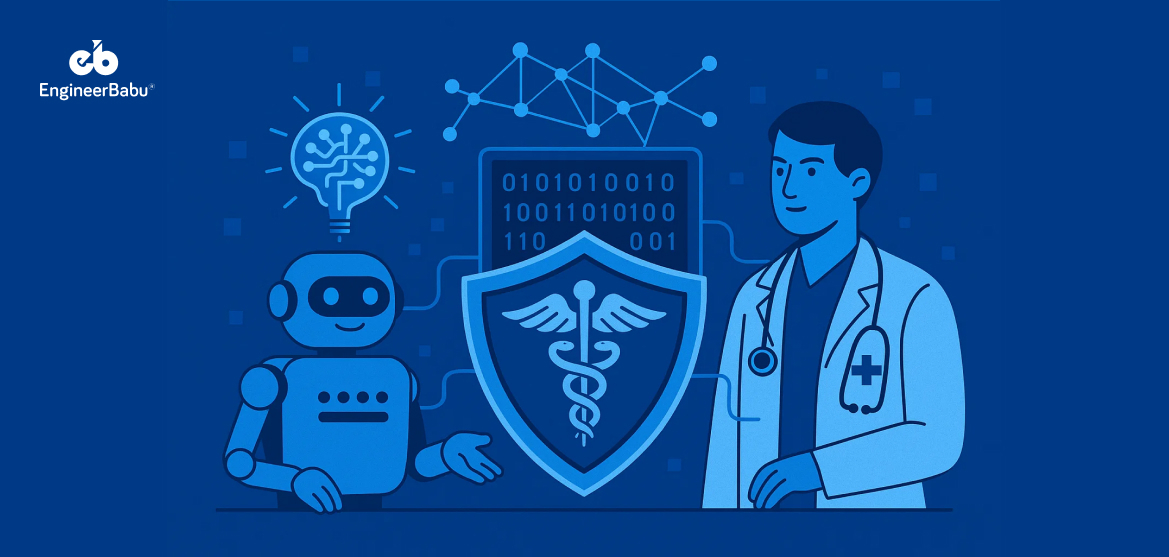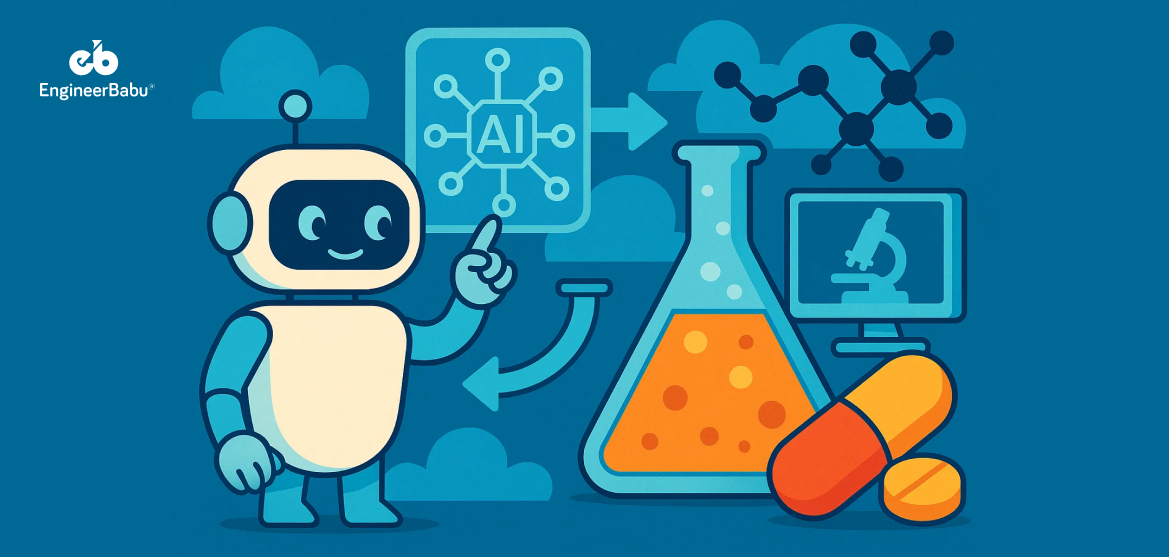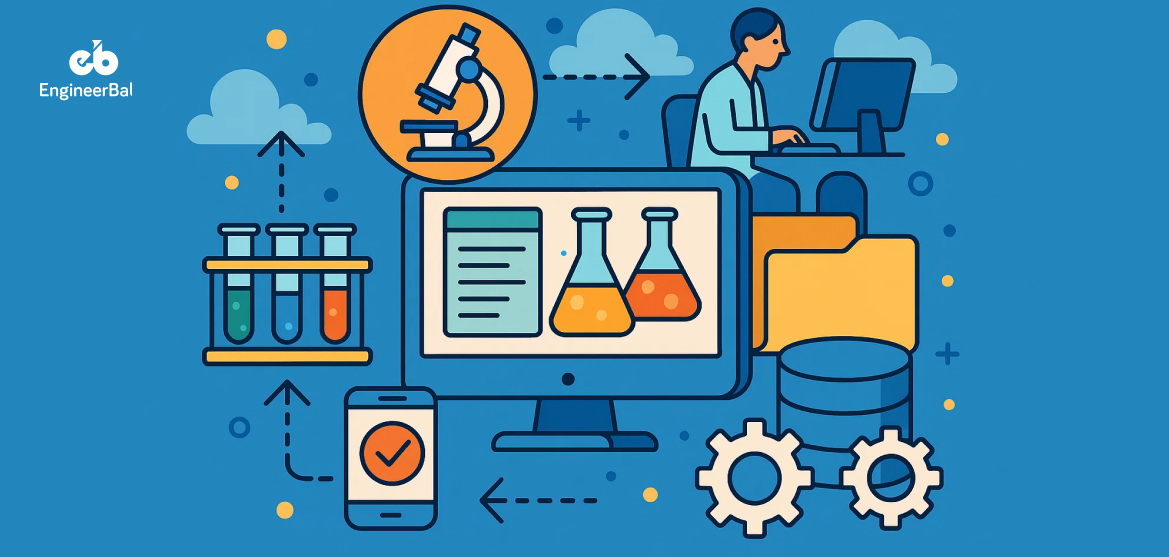Telemedicine is no longer an optional upgrade—it’s the operational backbone of forward-thinking healthcare institutions. As patient expectations evolve and staffing pressures mount, clinics and hospitals can no longer afford inefficiencies rooted in outdated systems.
A recent report by the American Hospital Association revealed that over 76% of U.S. hospitals now connect with patients and providers through telehealth technology, proving this shift isn’t just a trend—it’s a permanent fixture in healthcare delivery.
For hospital administrators, clinic owners, and IT professionals, adopting telemedicine apps is about more than convenience. It’s about expanding reach, cutting operational waste, and improving patient care—without compromising on quality or compliance.
Benefits of Telemedicine Apps
1. Enhanced Patient Access and Convenience
Most patients don’t want to wait weeks for a 15-minute appointment. And they definitely don’t want to drive across town or take time off work to see a doctor. Telemedicine apps solve that problem by removing the physical barriers between patients and providers.
With on-demand video consultations, patients can connect with doctors from home, their office, or anywhere with a decent internet connection. This kind of flexibility matters, especially for those in rural areas where access to specialists is limited. It also helps patients with chronic conditions avoid unnecessary travel for routine check-ins.
Clinics and hospitals benefit too. Fewer in-person visits means less strain on front desk staff, shorter waiting room times, and more efficient appointment scheduling. Instead of dealing with late arrivals and last-minute cancellations, providers can keep their calendars on track with automated reminders and virtual queues.
The result is a smoother, more accessible experience for both patients and healthcare teams.
2. Operational Efficiency and Workflow Optimization
One of the biggest drains on any hospital or clinic is the amount of time wasted on administrative work. Manual scheduling, patient intake, follow-ups, and billing slow everything down. Telemedicine apps help clean that up.
By integrating with EHR systems and automating tasks like appointment booking and digital consent forms, telemedicine tools reduce back-and-forth for staff. Nurses and front desk teams spend less time on paperwork and more time on actual care coordination. Even simple features like automated appointment reminders and digital patient check-ins can dramatically reduce no-shows and delays.
From a management perspective, real-time dashboards and reporting tools offer clear visibility into staff productivity, patient flow, and service demand. That kind of data makes it easier to allocate resources efficiently and identify bottlenecks before they impact operations.
3. Cost Reduction and Revenue Growth
Running a healthcare facility is expensive. Between staffing, equipment, and facility overhead, the margins are often tighter than expected. Telemedicine apps help shift that balance by cutting unnecessary costs while opening up new ways to bring in revenue.
Virtual consultations lower the need for physical space. A provider can see more patients in less time without needing additional exam rooms or waiting areas. That reduces utility costs, front desk workload, and even cleaning services.
At the same time, telemedicine allows clinics and hospitals to serve more patients without expanding their physical footprint. Providers can extend their reach to patients outside their immediate geography, especially in underserved or rural communities. This kind of access is not just valuable to patients—it’s billable time that often went uncaptured before.
Some hospitals are also using telehealth to reduce avoidable ER visits. When patients can consult a doctor virtually for non-emergency concerns, it keeps emergency departments focused on true emergencies, which is better for care quality and cost control.
It’s a smarter way to grow, without the usual investment in brick-and-mortar expansion.
4. Improved Patient Engagement and Satisfaction
Patients today expect the same level of convenience from healthcare that they get from food delivery or online banking. Long hold times and waiting room delays make them less likely to follow through with care. Telemedicine apps give patients a smoother, more connected experience that builds trust and encourages follow-up.
Features like secure messaging, instant access to test results, and virtual follow-ups keep patients in the loop. When people can reach their doctor with a quick message or check their prescriptions from their phone, they feel more in control of their health.
This kind of real-time communication also helps patients stay on track with treatment plans. Missed appointments and forgotten instructions drop significantly when patients can get timely reminders and ask questions without having to book another visit.
For hospitals and clinics, that translates into higher patient retention, better outcomes, and stronger satisfaction scores. And when those numbers go up, so does your reputation.
5. Remote Patient Monitoring and Chronic Disease Management
Managing chronic conditions like diabetes, hypertension, or heart disease requires consistent follow-up and data tracking. Traditional in-person visits alone often fall short. Telemedicine apps equipped with remote monitoring features change that by giving providers a continuous line of sight into a patient’s condition.
Using connected devices—like glucose monitors, blood pressure cuffs, or wearables—clinics can collect real-time health data without needing the patient to come in. This allows care teams to detect early warning signs and intervene before an issue becomes critical.
Patients feel more supported between visits, which improves adherence to treatment and reduces hospital readmissions. It also empowers them to play a more active role in their own care, which research shows leads to better long-term outcomes.
From an operational standpoint, remote monitoring reduces the strain on physical resources while improving the quality of care. It’s a scalable way to manage high-risk populations without overwhelming your staff.
6. Data-Driven Decision Making
Every hospital and clinic collects data, but not all of it gets used in a meaningful way. Telemedicine apps change that by turning raw information into real-time insights that actually improve care and operations.
When integrated with EHR systems, these platforms capture everything from patient symptoms and appointment patterns to follow-up rates and response times. This kind of data helps administrators and care teams spot trends quickly. For example, if virtual visits are consistently shorter but just as effective, that’s a clear sign you can optimize schedules and serve more patients without sacrificing quality.
Telemedicine also makes it easier to track key performance metrics like patient satisfaction, provider efficiency, and no-show rates. With the right dashboards, decision-makers can adjust staffing, refine workflows, and improve service delivery based on actual usage, not assumptions.
The result is a smarter, more agile healthcare system that responds to what’s happening on the ground, not just what’s planned on paper.
7. Scalability and Flexibility
Healthcare demand doesn’t stay the same from month to month. Flu season hits, staff changes happen, and unexpected surges can overwhelm even the most organized clinic. Telemedicine apps give healthcare providers the flexibility to respond without scrambling for more space or staff.
Virtual care platforms can scale up quickly when demand rises. Instead of turning patients away or rushing to hire, hospitals can add virtual visit slots or loop in remote providers to handle overflow. This kind of agility is especially useful during public health events, seasonal spikes, or when expanding into new service areas.
Telemedicine also allows care teams to adapt services based on what patients actually need. Some clinics use video visits for triage, others for follow-ups or behavioral health. You’re not locked into a fixed model, which means you can adjust as your organization grows or your patient base changes.
It’s a flexible tool that expands capacity without the cost or complexity of physical expansion.
8. Enhanced Collaboration Among Healthcare Professionals
Good care doesn’t happen in silos. Most patients interact with multiple specialists, nurses, and primary care providers. When those professionals aren’t aligned, details get missed and care suffers. Telemedicine apps help close that gap by making collaboration easier and more immediate.
With secure messaging, shared digital records, and real-time video conferencing, providers can quickly consult each other without waiting for in-person meetings or lengthy email threads. A specialist can review a case with a primary care doctor in minutes, not days. That kind of speed improves decision-making and reduces the risk of errors or duplicated efforts.
This also benefits care coordination for patients with complex needs. Instead of juggling disconnected appointments and repeated tests, care teams can stay on the same page and build more efficient treatment plans.
Whether it’s across departments in the same hospital or between facilities in different cities, telemedicine tools keep the right people connected at the right time.
9. Compliance and Security
Healthcare data is some of the most sensitive information out there. One breach or compliance slip can lead to serious legal consequences and loss of trust. Telemedicine apps that are built with security in mind help hospitals and clinics stay on the right side of regulations without adding extra friction to daily operations.
The best platforms come with built-in encryption, access controls, and audit trails. That means every video call, message, and file transfer is protected from unauthorized access. This matters not just for HIPAA compliance but also for patient peace of mind. When patients know their information is safe, they’re more likely to engage fully with virtual care.
Many apps also come with automated compliance features like consent forms, session logs, and secure data storage. These tools make it easier to prove adherence to regulatory standards during audits or legal reviews.
Instead of viewing compliance as a hurdle, clinics can use secure telemedicine platforms as a strength. It becomes part of how you build trust and run a responsible, future-ready practice.
10. Better Resource Utilization
Every hospital and clinic has limited resources. Whether it’s staff time, exam rooms, or equipment, the goal is to use what you have as efficiently as possible. Telemedicine apps help healthcare teams do more with less by reducing wasted time and making smarter use of existing capacity.
For example, when follow-up visits happen virtually, exam rooms stay free for patients who actually need in-person care. This means less patient overflow and fewer scheduling conflicts. Providers can also shift between virtual and in-person appointments more smoothly, helping balance workloads and avoid burnout.
Administrative teams benefit too. With automated intake, scheduling, and documentation tools, they spend less time on repetitive tasks and more time focusing on the patient experience. It’s not just about cutting costs, it’s about redirecting energy to the areas that have the biggest impact on care quality.
By streamlining how people, time, and space are used, telemedicine apps help healthcare organizations stay productive without pushing their teams to the limit.
Conclusion
Telemedicine apps are no longer just a response to a crisis or a tech trend. They’re a practical, proven way to improve how clinics and hospitals operate every day. From reducing no-shows to improving patient monitoring and streamlining collaboration, these platforms deliver real results that matter to patients, providers, and administrators alike.
For decision-makers in healthcare, the takeaway is simple. Telemedicine is a strategic tool that helps you run smarter, respond faster, and care better.
If you’re looking to scale virtual care, improve operational flow, or develop a custom telemedicine solution, Engineerbabu can help you find pre-vetted tech partners with deep experience in healthcare.
FAQs
1. What are the key features of a telemedicine app for hospitals?
Core features include secure video consultations, appointment scheduling, electronic health record (EHR) integration, patient intake forms, prescription management, and real-time chat. Advanced platforms may also support remote patient monitoring, analytics dashboards, and multilingual support for wider accessibility.
2. How do telemedicine apps help reduce operational costs for clinics?
They cut costs by minimizing in-person visits, reducing administrative workload through automation, and lowering infrastructure demands. Clinics can see more patients without adding space or staff, making telemedicine a scalable and cost-effective solution.
3. Is telemedicine HIPAA compliant?
Yes, but only if the platform meets specific regulatory standards. HIPAA-compliant telemedicine apps include features like end-to-end encryption, secure logins, audit trails, and proper data storage protocols to protect patient privacy and ensure legal compliance.
4. Can small or rural clinics benefit from telemedicine apps?
Absolutely. Telemedicine helps rural and smaller clinics extend care to patients who may not have access to local specialists. It also allows providers to offer flexible scheduling and maintain high-quality care with fewer in-person demands.
5. Does EngineerBabu offer healthcare software development services?
Yes, EngineerBabu—powered by Supersourcing—specializes in custom healthcare software development. They help hospitals, clinics, and healthtech startups build secure, scalable telemedicine apps tailored to their specific workflows. Their vetted developer network brings deep experience in HIPAA-compliant systems, EHR integration, and AI-powered diagnostics.




